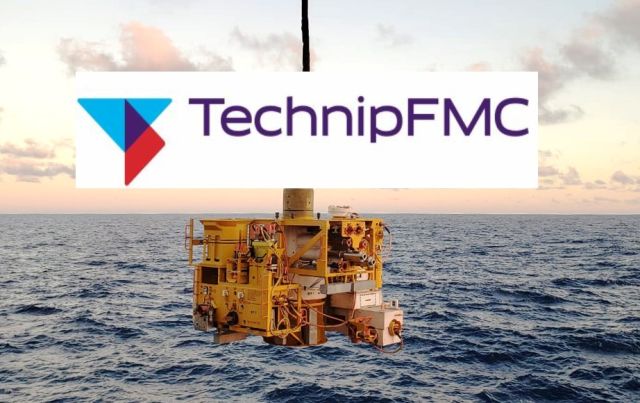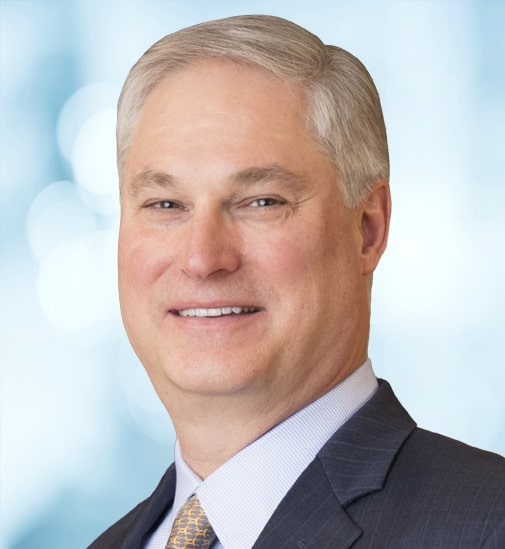
Not only is the offshore market size increasing, Chairman and CEO Doug Pferdehirt said, but TechnipFMC is winning more of that market share through its integrated offerings that can reduce project cycle times by 12 months to 14 months. (Source: TechnipFMC)
TechnipFMC is on track to win $10 billion in subsea orders this year, and as much as $30 billion through 2025.
One reason is because of a shift in more capital flowing to offshore projects, TechnipFMC Chairman and CEO Doug Pferdehirt said during a Feb. 22 call discussing the company’s fourth-quarter 2023 earnings.
“For more than a decade, unconventional resources in North America have provided a significant portion of the world’s hydrocarbon growth, but growth from the region will be more limited in the years ahead,” he said. “Driven by capital frameworks that reward higher economic returns and increased shareholder distributions, this means that the incremental production needed to support global growth will come primarily from international markets, driven by the Middle East and offshore.”
Not only is the offshore market size increasing, he said, but TechnipFMC is winning more of that market share through its integrated offerings that can reduce project cycle times by 12 months to 14 months.
“We have high confidence in the durability of the market over the intermediate term. In 2024, we remain on track to meet our prior guidance for subsea inbound [orders]. With current year order expectations approaching $10 billion today, we are also increasing our expectations for subsea inbound [orders] over the three years ending 2025 to reach $30 billion, a 20% increase versus our prior view,” Pferdehirt said.
That first order for 2024, he noted, came from Petrobras, which in January awarded TechnipFMC an integrated engineering, procurement, construction and installation (iEPCI) contract valued at more than $1 billion for subsea high-pressure separation and reinjection of CO2 at the deepwater Mero 3 field offshore Brazil.
HISEP project
While TechnipFMC has offered subsea processing and boosting solutions, the Mero 3 High Pressure Separation (HISEP) project is a “completely different” application of the technology, he said.
“Greenhouse gas (GHG) intensity, CCS (carbon capture and storage) opens up a completely different dynamic in terms of the thinking around sanctioning a project,” he said.
Mero 3 “is a CCS project. This is about reducing greenhouse gas intensity. This is about separating the CO2 on the seafloor and re-injecting it into the subsurface. It never sees the atmosphere. It is at the bottom of the ocean on the seafloor in a closed loop system where we can separate out the CO2 and again re-inject CO2, hence delivering a much lower greenhouse gas intensity for the project,” he said.
This added dimension is one reason he believes the Mero 3 HISEP project opens “almost” a new market.
Pferdehirt said HISEP technology might appeal to offshore operators due to reduced FPSO complexity and construction costs of the gas processing plant when placed subsea, as well as its role in reducing GHG intensity.
Placing a gas processing unit on the seabed rather than on an FPSO reduces the complexity of FPSO topsides.
“There’s obviously more real estate on the seafloor. We can do things, if you will, horizontally, whereas if you are on a ship, you are pretty much constrained to doing things vertically. Any sort of vertical construction costs more than horizontal construction,” he said.
While TechnipFMC has worked with Petrobras since 2016 on the technology, the plan is to design one and build many, he added.
Integrated focus
TechnipFMC’s integrated contract offerings can trim a year or more off project timelines, Pferdehirt said, and he expects that to continue to improve over time.
He compared the expected continuous innovation curve for subsea offerings to the improvements in fracking unconventional wells.
“Back in the day when I was fracking, it was single stage, single well and at most you did two a day because you had to rig down to move to the next well,” he said, noting that eventually evolved into simul-fracking and trimul-fracking. “We saw that productivity curve, which was dramatic and very impressive, what was able to be accomplished in the unconventionals, think about it. And subsea is going to be no different. It’s just we're in the very early stages of it.”
He said TechnipFMC is delivering projects so much faster “than anyone else can do it because they’re doing it the old-fashioned way,” which is bespoke. “We're not doing bespoke anymore. We’re doing configure to order versus engineer to order.”
20K and all-electric tech
As the industry ventures further into the Lower Tertiary in the Gulf of Mexico (GoM), operators will need equipment rated for higher pressures. On Feb. 19, Shell awarded TechnipFMC an iEPCI contract valued between $250 million and $500 million for subsea production systems, umbilicals, risers and flowlines rated up to 20,000 psi.

“Lower Tertiary Gulf of Mexico high pressure clearly is starting to move forward,” he said.
While Sparta is not TechnipFMC’s first 20K project—in 2019 it won a contract for LLOG’s Shenandoah project in the GoM—it is the company’s first 20K iEPCI contract, he said. And more awards are possible.
“Chevron has assets. Shell has assets. BP has assets. Beacon, LLOG, both have assets,” he said, adding that most of these assets have a “high probability” of moving forward. “We don't speak to it as a new frontier, but it certainly is a new horizon within an existing frontier.”
Pferdehirt also said electrification of subsea systems will allow the industry to work in ever deeper waters.
“Deeper and electrified are actually complementary,” he said.
The response time for hydraulic actuation systems is not fast enough in extremely deep waters, he said.
“Electrification will enable deeper, but there are also other aspects to going deeper, particularly when you think about things like flexible pipe design. We have the only flexible pipe that will be able to work at the depths that these emerging basins are being developed,” he said.
The numbers
For the fourth quarter of 2023, TechnipFMC reported net income of $53 million on revenue of $2 billion, compared to third-quarter 2023 net income of $90 million on revenue of $2.1 billion and fourth-quarter 2022 net loss of $26.7 million on revenue of $1.7 billion.
For 2023, the company reported net income of $56 million on revenue of $7.8 billion, compared to net loss of $61.9 million on revenue of $6.7 billion in 2022.
Recommended Reading
Texas Gas Vital to Mexico’s Nearshoring Boom
2024-10-25 - Continued U.S. piped-gas exports to Mexico bode well for Eagle Ford and Permian producers.
South Dakota High Court Rejects Eminent Domain Power for CCUS Pipeline
2024-10-25 - The South Dakota Supreme Court justices have placed yet another roadblock in the way of Summit Carbon Solutions’ highly contested carbon capture pipeline project.
Pitts: How Venezuelan Elections Impact Texas and Louisiana
2024-10-24 - The ramifications of another questionable election in Venezuela comes as Chevron’s quest to recoup debts continues. And Washington’s likely next steps will include more of the same: sanctions.
Trump vs. Harris—Policy Promises vs. Economics
2024-10-22 - The presidential debate did not shed much light on policy initiatives. Are there substantive differences?
Supreme Court Takes Up Clean Air Act Venue Fight
2024-10-21 - The high court’s justices will hear arguments if the EPA’s air pollution rules should be challenged in D.C. or in regional courts.
Comments
Add new comment
This conversation is moderated according to Hart Energy community rules. Please read the rules before joining the discussion. If you’re experiencing any technical problems, please contact our customer care team.






